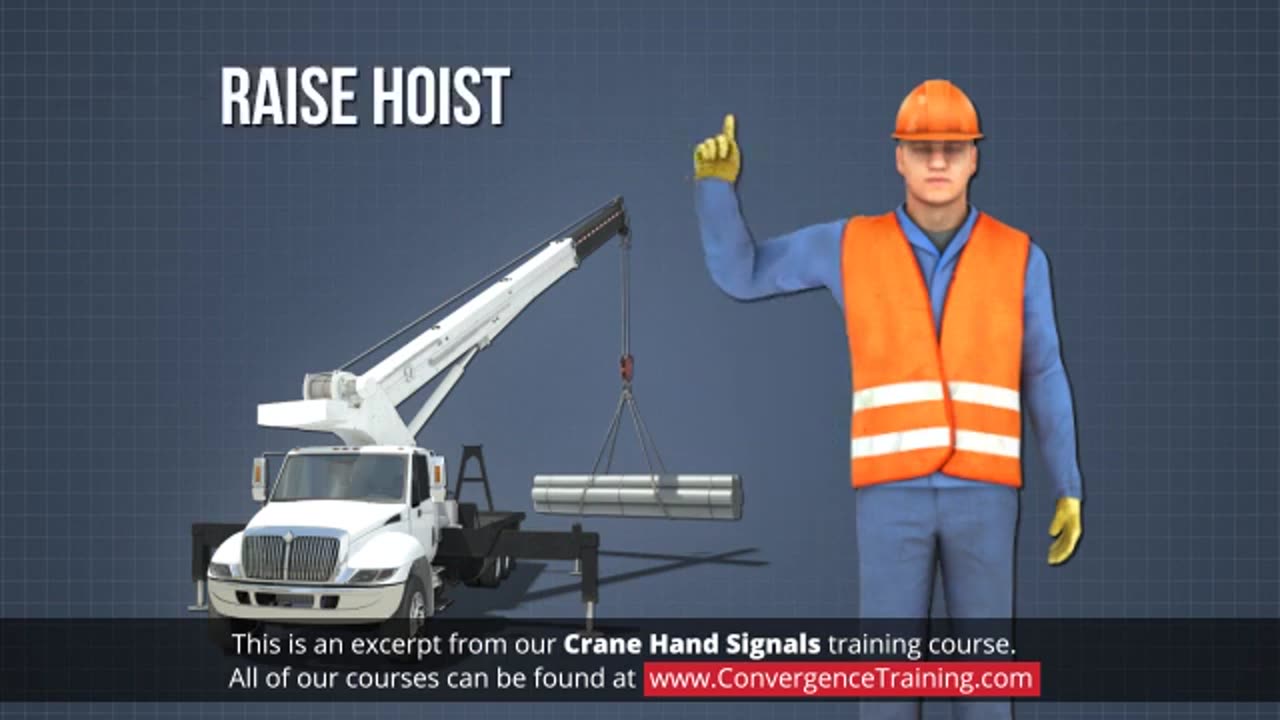Premium Only Content

Electrical Safety Introduction (Z-462) for Canada
**Crane Hand Signals for Canada** are a vital aspect of communication between crane operators and signalers, ensuring safe and efficient crane operations. These signals are standardized across Canada to minimize misunderstandings and are based on recommendations by organizations such as the **CSA Z150 Standard for Mobile Cranes** and the **Construction Safety Association of Ontario (CSAO)**. They are essential in noisy worksites or when verbal communication is impractical.
Here’s a guide to common crane hand signals used in Canada:
---
### **General Guidelines for Hand Signals**
1. **Designate a Signaler**:
- Only one person should signal the operator unless otherwise agreed upon.
- The signaler must wear high-visibility clothing and be in a visible position.
2. **Standardized Movements**:
- Use large, clear, and deliberate gestures to avoid confusion.
3. **Stop Signals**:
- Any worker can give a stop signal in an emergency, and the operator must obey it immediately.
4. **Understanding**:
- Operators and signalers must review the signals before starting work.
---
### **Common Crane Hand Signals**
Below are the standard hand signals used in Canada, typically outlined by CSA Z150 and similar to those used internationally.
#### **Hoist the Load**
- **Signal**: Extend your arm upward with your index finger pointing upward. Move your hand in small circles.
- **Purpose**: Lift the load vertically.
#### **Lower the Load**
- **Signal**: Extend your arm downward with your index finger pointing downward. Move your hand in small circles.
- **Purpose**: Lower the load.
#### **Stop**
- **Signal**: Extend your arm outward with your palm facing downward. Hold your palm steady or move your arm back and forth horizontally.
- **Purpose**: Immediately halt all crane movement.
#### **Emergency Stop**
- **Signal**: Extend both arms outward with palms facing downward. Move both arms back and forth horizontally.
- **Purpose**: Stop operations immediately in case of danger.
#### **Raise Boom**
- **Signal**: Extend your arm outward and make a thumbs-up gesture. Move your hand in small circles.
- **Purpose**: Raise the crane boom.
#### **Lower Boom**
- **Signal**: Extend your arm outward and make a thumbs-down gesture. Move your hand in small circles.
- **Purpose**: Lower the crane boom.
#### **Swing Boom**
- **Signal**: Extend your arm outward and point with your index finger in the direction the boom should swing.
- **Purpose**: Rotate the boom to the left or right.
#### **Retract Boom**
- **Signal**: Place both hands in front of your body, thumbs pointing toward each other. Move your hands together.
- **Purpose**: Shorten the boom.
#### **Extend Boom**
- **Signal**: Place both hands in front of your body, thumbs pointing away from each other. Move your hands apart.
- **Purpose**: Lengthen the boom.
#### **Travel (Crawler Cranes or Mobile Cranes)**
- **Forward Travel**:
- **Signal**: Extend both arms forward, palms facing upward, and make a circular motion with your hands.
- **Purpose**: Move the crane forward.
- **Reverse Travel**:
- **Signal**: Extend both arms backward, palms facing upward, and make a circular motion with your hands.
- **Purpose**: Move the crane backward.
#### **Dog Everything (Pause All Movements)**
- **Signal**: Clasp your hands together in front of your body.
- **Purpose**: Pause all crane operations temporarily.
#### **Load Direction**
- **Signal**: Use one arm extended with your finger pointing in the direction the load needs to move.
- **Purpose**: Guide the crane operator to move the load horizontally.
#### **Tilt Load**
- **Signal**: Hold one hand flat while tilting it back and forth.
- **Purpose**: Indicate the need to adjust the load’s tilt angle.
---
### **Importance of Hand Signals**
1. **Safety**:
- Prevent accidents and injuries caused by miscommunication.
2. **Efficiency**:
- Enhance coordination between crane operators and ground workers.
3. **Compliance**:
- Meet legal and industry safety standards, such as those outlined in provincial OHS regulations.
---
### **Training and Certification**
Workers involved in crane operations must:
- Be trained and familiar with crane hand signals.
- Review and practice signals regularly to ensure clarity and consistency.
- Hold proper certification, such as **signal person certification**, where required by provincial regulations.
---
### **Conclusion**
Crane hand signals are a critical communication tool in Canadian worksites. By following standardized signals, workers and operators can ensure safe, efficient, and compliant crane operations. Regular training and adherence to CSA and provincial guidelines further minimize risks and improve workplace productivity.
-
 6:43
6:43
HSESafetyInformation
7 months agoLahori Chanay Recipe - Lahori Cholay Recipe - Chana Chana Masala
57 -
 LIVE
LIVE
Lara Logan
12 hours agoTHE REMNANT RISES: Matt Shea & The New Generation of Pastors on Fire for God & Country | Episode 37
349 watching -

Nikko Ortiz
5 hours agoADHD, Crashouts, and Karens - Rumble LIVE
54.3K5 -
 49:21
49:21
Steven Crowder
4 hours agoWhy She's Wrong and other Life Advice from Steven Crowder
182K120 -
 48:24
48:24
The Rubin Report
3 hours agoPress Stunned by Trump’s Brutally Honest Reaction to James Comey Question
47.1K21 -
 1:02:42
1:02:42
VINCE
5 hours agoComey Indicted, Soros Exposed: The Powder Keg Just Exploded | Episode 134 - 09/26/25
242K299 -
 DVR
DVR
Bannons War Room
7 months agoWarRoom Live
38.3M8.88K -
 1:45:34
1:45:34
Benny Johnson
4 hours ago🚨James Comey INDICTED for Perjury and Obstruction, Years In JAIL | 275 FEDS in January 6th Crowd
79.7K110 -
 1:35:48
1:35:48
Dear America
5 hours agoBOMBSHELL: 274+ Feds Where in The Crowd On Jan 6th!! + James Comey Finally INDICTED!!
154K107 -
 1:55:16
1:55:16
Badlands Media
9 hours agoBadlands Daily: September 26, 2025 – Comey Indicted, FBI Exposed, and Shutdown Looms
59.8K24